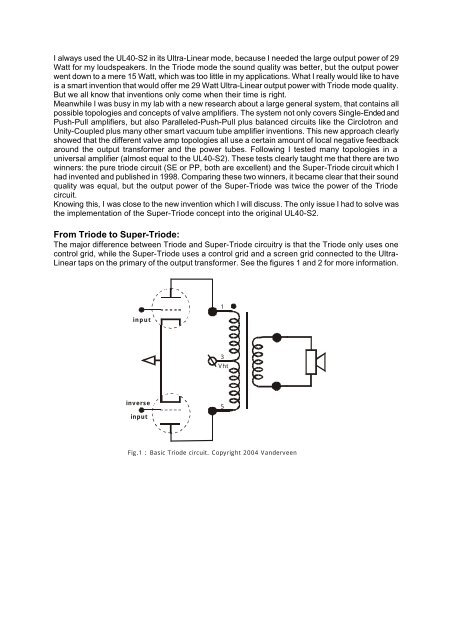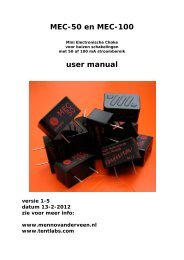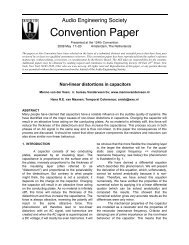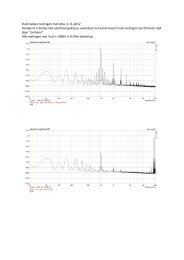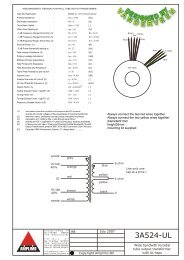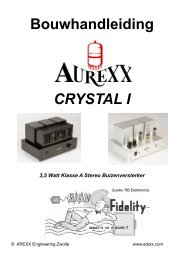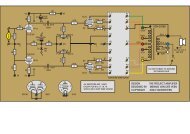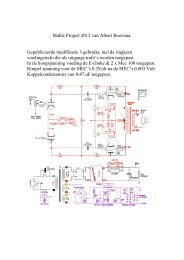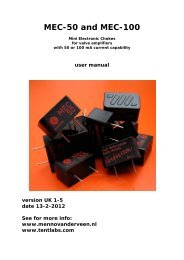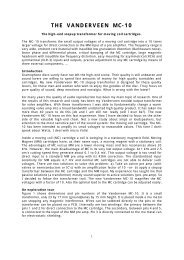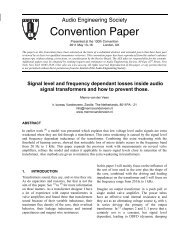pdf version - Menno van der Veen
pdf version - Menno van der Veen
pdf version - Menno van der Veen
You also want an ePaper? Increase the reach of your titles
YUMPU automatically turns print PDFs into web optimized ePapers that Google loves.
I always used the UL40-S2 in its Ultra-Linear mode, because I needed the large output power of 29<br />
Watt for my loudspeakers. In the Triode mode the sound quality was better, but the output power<br />
went down to a mere 15 Watt, which was too little in my applications. What I really would like to have<br />
is a smart invention that would offer me 29 Watt Ultra-Linear output power with Triode mode quality.<br />
But we all know that inventions only come when their time is right.<br />
Meanwhile I was busy in my lab with a new research about a large general system, that contains all<br />
possible topologies and concepts of valve amplifiers. The system not only covers Single-Ended and<br />
Push-Pull amplifiers, but also Paralleled-Push-Pull plus balanced circuits like the Circlotron and<br />
Unity-Coupled plus many other smart vacuum tube amplifier inventions. This new approach clearly<br />
showed that the different valve amp topologies all use a certain amount of local negative feedback<br />
around the output transformer and the power tubes. Following I tested many topologies in a<br />
universal amplifier (almost equal to the UL40-S2). These tests clearly taught me that there are two<br />
winners: the pure triode circuit (SE or PP, both are excellent) and the Super-Triode circuit which I<br />
had invented and published in 1998. Comparing these two winners, it became clear that their sound<br />
quality was equal, but the output power of the Super-Triode was twice the power of the Triode<br />
circuit.<br />
Knowing this, I was close to the new invention which I will discuss. The only issue I had to solve was<br />
the implementation of the Super-Triode concept into the original UL40-S2.<br />
From Triode to Super-Triode:<br />
The major difference between Triode and Super-Triode circuitry is that the Triode only uses one<br />
control grid, while the Super-Triode uses a control grid and a screen grid connected to the Ultra-<br />
Linear taps on the primary of the output transformer. See the figures 1 and 2 for more information.<br />
input<br />
1<br />
3<br />
Vht<br />
inverse<br />
input<br />
5<br />
Fig.1 : Basic Triode circuit. Copyright 2004 Van<strong>der</strong>veen


